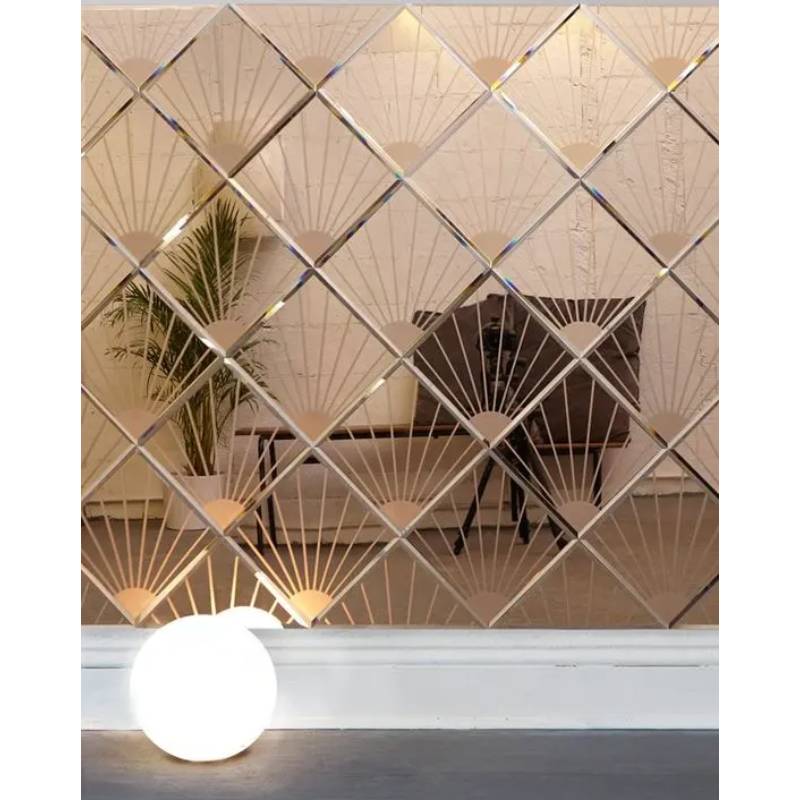Tinted glass, often discussed for its aesthetic and practical benefits, has become an integral element in modern architecture, automotive, and residential sectors. Understanding what tinted glass entails can illuminate why it’s a preferred choice for many and how it can be optimized for various applications, reflecting expertise, authority, and trustworthiness in the industry.

Tinted glass, simply put, is glass that has been treated with a material that reduces the transmission of light through it. This modification affects the visual appearance of the glass and enhances its functionality, providing benefits such as glare reduction, privacy, UV protection, and improved energy efficiency. The tint is achieved through various methods, such as adding metallic oxides during the glass manufacturing process or applying window films after production. Each method offers distinct advantages, influencing the performance and application of the glass.
From an architectural standpoint, tinted glass is a game-changer. It offers a way to manage the sun’s natural light and heat, creating comfortable and energy-efficient environments. Buildings with significant glass facades benefit immensely as tinted glass can significantly reduce the burden on air conditioning systems. This effect not only cuts energy costs but also contributes to a building’s eco-friendly credentials, a vital consideration in today’s sustainability-focused world.

The use of tinted glass in buildings also extends to enhancing privacy without compromising on natural light. Businesses and homeowners alike appreciate the ability of tinted glass to provide privacy while still allowing occupants to enjoy the external view. This dual benefit makes tinted glass a preferred choice not only for commercial skyscrapers but also for personal residences, particularly in urban settings where privacy is often at a premium.
In the automotive industry,
tinted glass is synonymous with luxury and style. Beyond aesthetics, it plays a crucial role in passenger comfort and vehicle protection. The ultraviolet (UV) and infrared (IR) light blocking properties of tinted glass protect occupants from harmful radiation, reducing the risk of skin damage and interior fading. Additionally, by reflecting solar energy, tinted glass can maintain cooler car interiors, thereby enhancing fuel efficiency indirectly by lessening the need for air conditioning. Automotive experts highlight the added layer of security tinted glass provides by reducing visibility into the vehicle, thus deterring theft.
what is meant by tinted glass
To further explore the technical expertise involved in tinted glass, it’s essential to consider the various types and their respective benefits. For instance, dyed tints are popular for their economic viability and ability to absorb heat, while metallic tints reflect light, offering superior heat and UV blockage. Ceramic tints, the newest innovation, provide high-performance heat rejection without affecting visibility or electronic device functionality, thus combining the best features of older technologies.
Beyond practical considerations, the implementation of tinted glass adheres to stringent regulations that vary by region. Authorities enforce these regulations to ensure safety and compliance, particularly in vehicles where visibility standards are critical. Professionals in the field must stay updated on these regulations to deliver solutions that are both effective and compliant.
Trust in tinted glass products is built through certification and thorough third-party testing. Consumers are advised to choose glass that meets specific standards set by recognized bodies such as the International Organization for Standardization (ISO) or the American National Standards Institute (ANSI). Certifications not only testify to the quality and performance of the glass but also assure users of its safety, particularly against shattering.
In summary, tinted glass is more than a stylish addition; it is a fusion of technology, design, and practical utility. Its diverse applications across architecture, automotive, and residential domains underscore its importance. With advancements in material science and production techniques, the future of tinted glass is poised to become even more integral to design and functionality in both private and public spaces. As experts and stakeholders in the industry continue to innovate, tinted glass will likely play an expanded role, aligning with global trends towards more sustainable and energy-efficient solutions.
 Afrikaans
Afrikaans  Albanian
Albanian  Amharic
Amharic  Arabic
Arabic  Armenian
Armenian  Azerbaijani
Azerbaijani  Basque
Basque  Belarusian
Belarusian  Bengali
Bengali  Bosnian
Bosnian  Bulgarian
Bulgarian  Catalan
Catalan  Cebuano
Cebuano  Corsican
Corsican  Croatian
Croatian  Czech
Czech  Danish
Danish  Dutch
Dutch  English
English  Esperanto
Esperanto  Estonian
Estonian  Finnish
Finnish  French
French  Frisian
Frisian  Galician
Galician  Georgian
Georgian  German
German  Greek
Greek  Gujarati
Gujarati  Haitian Creole
Haitian Creole  hausa
hausa  hawaiian
hawaiian  Hebrew
Hebrew  Hindi
Hindi  Miao
Miao  Hungarian
Hungarian  Icelandic
Icelandic  igbo
igbo  Indonesian
Indonesian  irish
irish  Italian
Italian  Japanese
Japanese  Javanese
Javanese  Kannada
Kannada  kazakh
kazakh  Khmer
Khmer  Rwandese
Rwandese  Korean
Korean  Kurdish
Kurdish  Kyrgyz
Kyrgyz  Lao
Lao  Latin
Latin  Latvian
Latvian  Lithuanian
Lithuanian  Luxembourgish
Luxembourgish  Macedonian
Macedonian  Malgashi
Malgashi  Malay
Malay  Malayalam
Malayalam  Maltese
Maltese  Maori
Maori  Marathi
Marathi  Mongolian
Mongolian  Myanmar
Myanmar  Nepali
Nepali  Norwegian
Norwegian  Norwegian
Norwegian  Occitan
Occitan  Pashto
Pashto  Persian
Persian  Polish
Polish  Portuguese
Portuguese  Punjabi
Punjabi  Romanian
Romanian  Russian
Russian  Samoan
Samoan  Scottish Gaelic
Scottish Gaelic  Serbian
Serbian  Sesotho
Sesotho  Shona
Shona  Sindhi
Sindhi  Sinhala
Sinhala  Slovak
Slovak  Slovenian
Slovenian  Somali
Somali  Spanish
Spanish  Sundanese
Sundanese  Swahili
Swahili  Swedish
Swedish  Tagalog
Tagalog  Tajik
Tajik  Tamil
Tamil  Tatar
Tatar  Telugu
Telugu  Thai
Thai  Turkish
Turkish  Turkmen
Turkmen  Ukrainian
Ukrainian  Urdu
Urdu  Uighur
Uighur  Uzbek
Uzbek  Vietnamese
Vietnamese  Welsh
Welsh  Bantu
Bantu  Yiddish
Yiddish  Yoruba
Yoruba  Zulu
Zulu 


